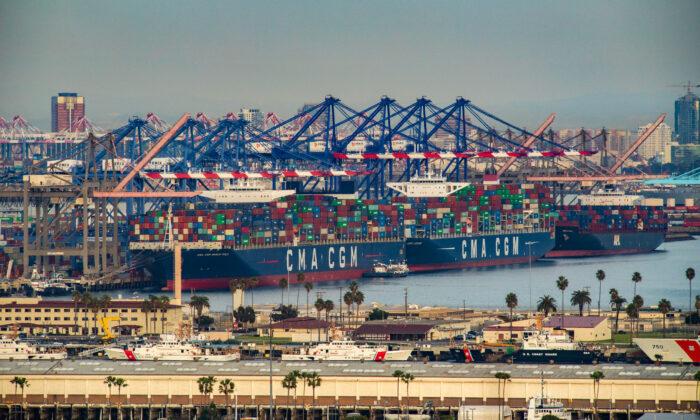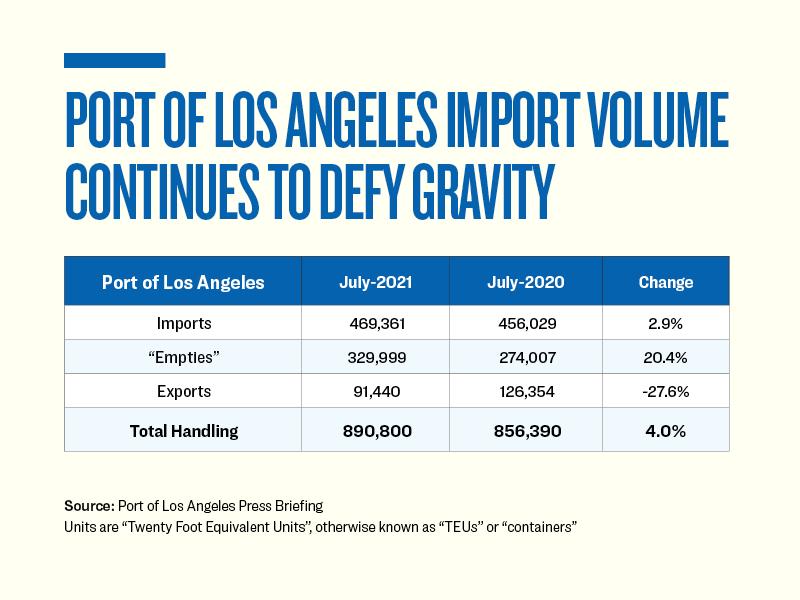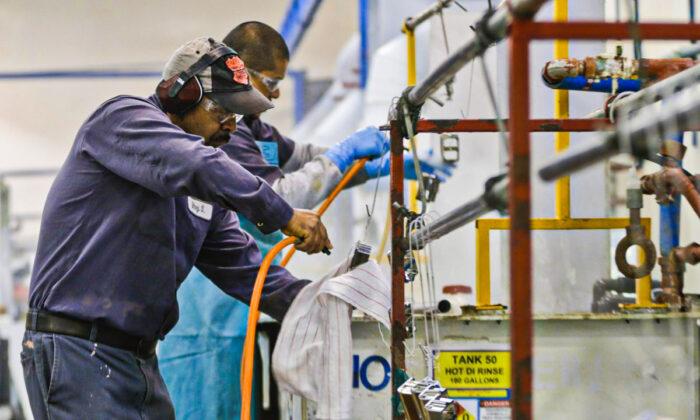The ports of Los Angeles and Long Beach are brimming with activity, and the 900,000 Southern California workers related to that activity are feeling it.
Truck drivers hired by one company are now making $25 per hour rather than the $18 per hour they were making before the pandemic—a 40 percent increase in just 18 months. Assuming a 40-hour work week and 50 weeks of work per year—that truck driver’s annual pay went from $36,000 a year before the pandemic to $50,000 a year now.
Railroad companies, the longshoremen (the union workers at the docks), the warehouse workers, and many others are all feeling the extra activity.
The ports are owned by the cities of Long Beach and Los Angeles and are leased to operators.
Through July this year, at the ports owned by the city of Los Angeles alone, 79 container vessels have unloaded their cargo. During the same time last year, there were 88 such unloadings. About two-thirds of the 20-foot containers are loaded onto trucks and the other one-third are loaded directly onto rail cars.
Imports into the United States travel from Asia to much of the world. Containers of cargo come into the ports of Los Angeles and Long Beach destined for consumers and factories not only in the United States but also in Europe and Latin America.
It’s cheaper in many instances for an Asian exporter to ship first to Los Angeles, get the container to New Jersey, and then have the cargo loaded onto a ship bound for Europe than it is to sail the cargo through the Panama Canal or across the Indian Ocean.
After a container reaches its U.S., Latin American, or European destination, it often reverses all the way back through the logistics chain to return to the ports of Los Angeles as an “empty.” The empty containers are then shipped back to Asia to be filled again by factories, sent back to Los Angeles, and then on to that container’s next destination.
One major reason “exports” are down is that China has stopped receiving plastic and cardboard recyclables from the United States. These used to make up a large part of “export” activity. The United States still exports a lot of lumber and bulk food items through the ports around San Pedro Harbor.
Looking forward, the Executive Director of the Port of Los Angeles said that even though imports will likely reach a record high in August, the number of TEU (twenty-foot equivalent unit) containers holding exports is “the lowest export number we’ve seen since February of 2005.”
For his part, John Jones, owner, CEO, and president of trucking company JTS Express and logistics company Jones National Transportation Services, has a note of urging for workers who are delaying going back to work.
“Now’s a great time to get a job. I’m paying high. I need the help,” he said.
After the first workers fill the current need, workers hired later will be hired by employers who may not be able to pay as much.







Friends Read Free